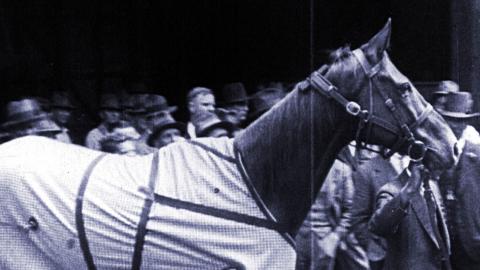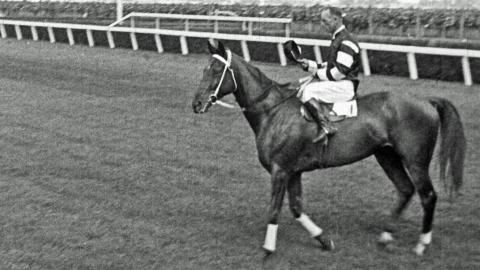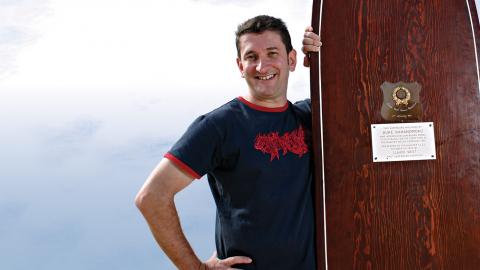
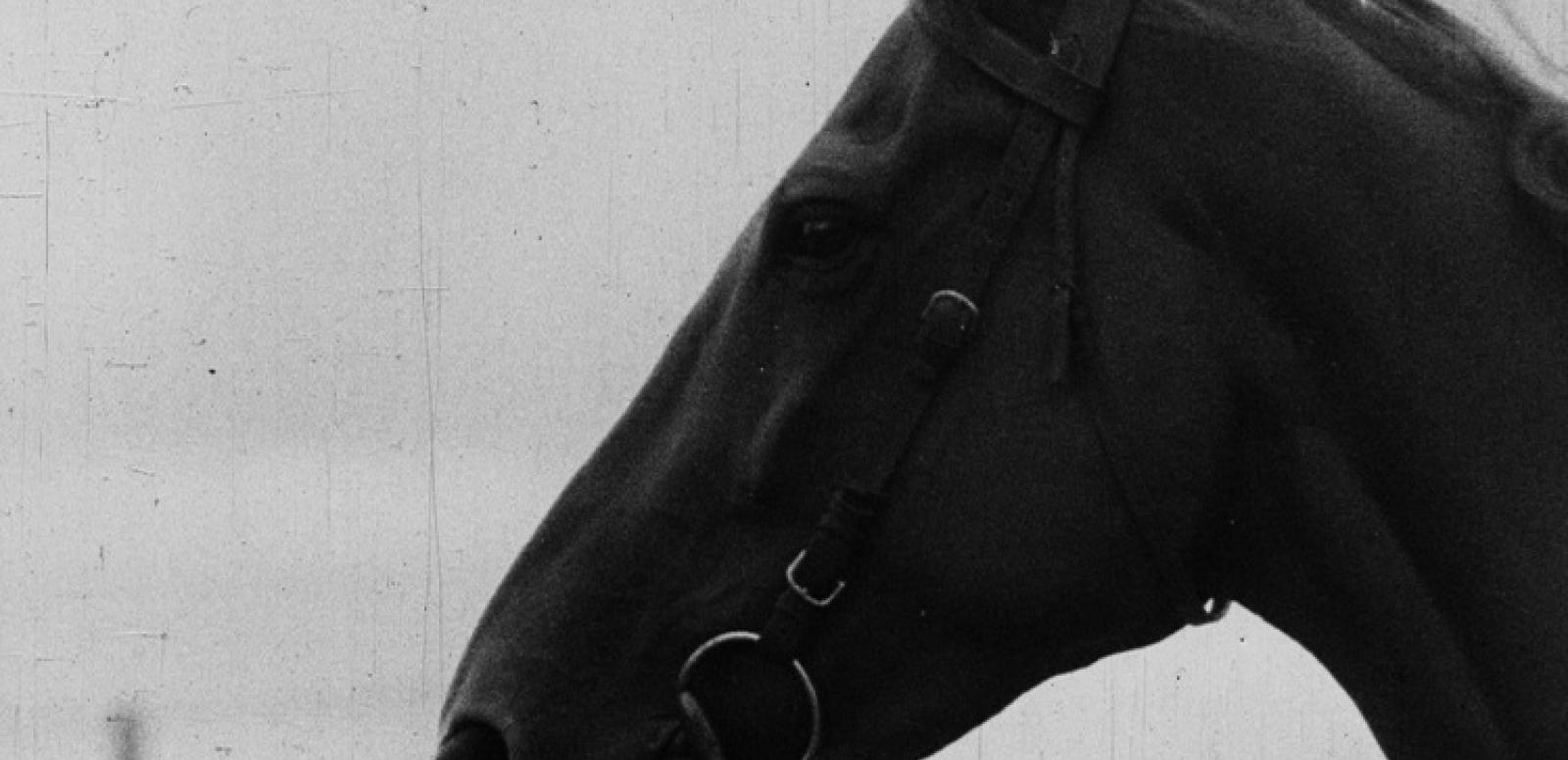
A 1931 nitrate film about Phar Lap
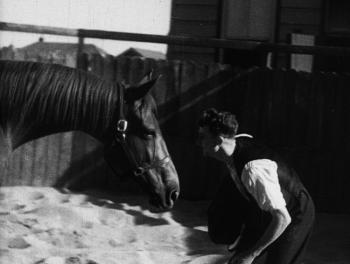
Phar Lap was – and remains – such an important part of the Australian consciousness, that even now his preserved heart is the most-requested object visitors ask to view at the National Museum in Canberra.
Newspapers of the day reported Phar Lap’s every movement in glowing terms: the Red Terror was the darling of the public and the scourge of the bookies.
Hundreds of admiring punters gathered around him at any public appearance; days before his 1930 Melbourne Cup win there was an assassination attempt when a shotgun was discharged at him from a nearby parked car. Subsequently the champion thoroughbred had a police escort to the Cup. Phar Lap was, in short, a rock star of the turf.
Only one documentary was made about Phar Lap during his lifetime: The Mighty Conqueror. This ten-minute film was produced by Neville Macken with some involvement from pioneer female filmmaker Paulette McDonagh, and although completed in 1931 it was not publicly screened until the time of Phar Lap’s death in mid-1932. It features superb close-ups of Phar Lap with handler Tommy Woodcock, rare footage of him doing track work, and interviews with his most frequent rider Jim Pike and with trainer and co-owner Harry Telford. Phar Lap is shown winning several races including the 1930 Melbourne Cup and the 1931 Randwick Plate – the only known footage of this race and the last time he would run at a Sydney race meet. The film finishes with Phar Lap being loaded on to the Ulimaroa at Sydney docks in November 1931, ultimately bound for the USA.
It also features footage of the area around Randwick racecourse – with its undeveloped open fields it’s very different to the Sydney suburb we know today.
A 1930s original
The NFSA has held 35mm film copies of The Mighty Conqueror since the early 1970s. These copies however were on safety film stock that at some point had been transferred from a nitrate print – the whereabouts of which remained a mystery.
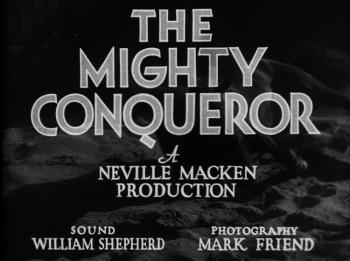
Nitrate (or nitrocellulose) film was in wide use until the 1940s when it was replaced by acetate safety film stock. Nitrate, famously, is a highly flammable film base: it can combust as it deteriorates, is capable of burning underwater, and is self-oxidising. It is the perfect storm of film stock, and was immortalised in the cinema burning scene in Quentin Tarantino’s Inglourious Basterds (2009).
However nitrate is actually a lovely and safe stock to work with. The film feels thick and almost waxy to the touch, and when projected the contrast between the blacks and whites is profound, with the whites luminous due to the high silver content in the chemical composition of the film. While it is not possible to see nitrate projected in Australia (for safety reasons it requires a purpose-built projector in a customised screening booth) there are institutions overseas which occasionally treat their audiences to a nitrate screening. At the NFSA the nitrate collection represents some of Australia’s earliest audiovisual heritage and is securely stored in isolated climate-controlled conditions.
You can imagine our excitement when the Australian Turf Club contacted us earlier this year with the offer of a nitrate copy of The Mighty Conqueror which, upon examination, was found to be in better condition than our existing safety film copies!
While the original 35mm picture and sound negatives for the film remain unaccounted for and are high on the NFSA’s most wanted list, this newly found nitrate print currently represents the only known original copy of The Mighty Conqueror to survive, and is a significant acquisition and a collection highlight. We have digitised it and it is now available in full on our YouTube channel:
The Mighty Conqueror (1931) NFSA title: 9014.
More Phar Lap at the NFSA
In the lead up to the 2014 Melbourne Cup on 4 November, here are other Phar Lap resources you can explore:
- Phar Lap collection materials which can be viewed (on demand) at our access centres.
- The 1932 song Phar Lap: Farewell To You! by Jack Lumsdaine:
With many thanks to NFSA curator and sports enthusiast Simon Smith for invaluable background information.
The National Film and Sound Archive of Australia acknowledges Australia’s Aboriginal and Torres Strait Islander peoples as the Traditional Custodians of the land on which we work and live and gives respect to their Elders both past and present.
